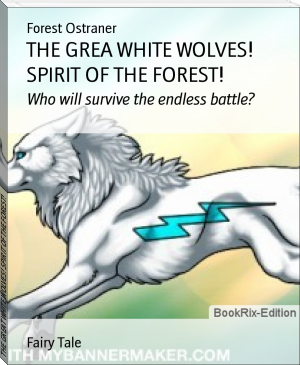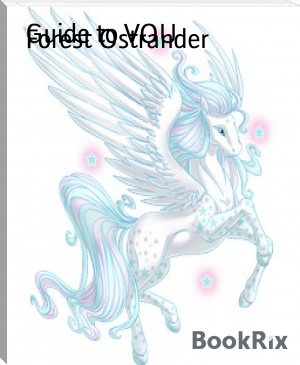Mythical Creatures Hand Book by Forest Ostrander (classic english novels .TXT) 📕

(not done)
Read free book «Mythical Creatures Hand Book by Forest Ostrander (classic english novels .TXT) 📕» - read online or download for free at americanlibrarybooks.com
- Author: Forest Ostrander
Read book online «Mythical Creatures Hand Book by Forest Ostrander (classic english novels .TXT) 📕». Author - Forest Ostrander
Jurawadbad: Mythical Number: #1753
Culture:Aboriginal
Attribute:Reptilian
Attribute:Humanoid
Behaviour:Troublesome
-A reptilian creature of Australia that is part man, part snake. He was a cosmic spirit who married a mortal woman. That woman cheated on him with another snake. Angered, Jurawadbad hid inside a hollow trunk. When his wife came along he sprung out from his hiding place and bit her.
K
Kadimakara: Mythical Number: #1761
Culture:Aboriginal
Attribute:Reptilian
Attribute:Celestial
Behaviour:Neutral
-According to Aboriginal myth there was a race of reptilian monsters that fell from the sky and lived on Earth. Eventually the sun grew powerful and it burnt them up leaving only their bones behind. We now know these creatures as dinosaurs.
Kaleru:
Also known as Kalseru, Rainbow Serpent
Mythical Number: #1780
Culture:Aboriginal
Attribute:Celestial
Attribute:Reptilian
Attribute:Aquatic
Behaviour:Friendly
Common Type:Sea Serpents
-A Rainbow Serpent from north-western Australia. These were magical beings of great power that feature in many tales of the native tribes. It is a cosmic multi-coloured python that lives in deep waters. The ancient spirit summoned it from the deep to carve out the landscape. Kalseru thus created the formation for gullies, rivers and billabongs. He is known to sleep in the mud during the dry season and flies to the sky as a rainbow sending down rain to help life re-grow during the wet season. He has a fascination for anything that is iridescent. Kalseru protects its people but it does punish those that break the law. Kalseru is closely link in with the land, weather, society and fertility.
The stories associated with the different types of Rainbow serpents across Australia depend on the tribe and what part of Australia they come from. Those tribes that experience monsoons depict the Rainbow serpent as interacting with the sun and the wind to create them in their Dreamtime stories. Those tribes that are more central in Australia and do not experience such turbulent weather tell their tales of a Rainbow serpent that reflect their own environmental condition.
Some believe that belief in the Rainbow Serpent is closely linked to the Wonambi naracoortensis which is an extinct ancient snake of gigantic proportions.
Karia: Mythical Number: #1794
Culture:Aboriginal
Attribute:Celestial
Attribute:Reptilian
Attribute:Aquatic
Behaviour:Friendly
Common Type:Sea Serpents
-A Rainbow Serpent from Australia. These were magical beings of great power that feature in many tales of the native tribes. It created the landscape as it rose from the depths of its habitat. Karia now rests under the Earth supporting the four pillars of cardinal directions that support the Earth itself. He is known to sleep in the mud during the dry season and flies to the sky as a rainbow sending down rain to help life re-grow during the wet season. He has a fascination for anything that is iridescent. Karia is closely link in with the land, weather, society and fertility.
Karora: Mythical Number: #1801
Culture:Aboriginal
Attribute:Aquatic
Attribute:Celestial
Behaviour:Friendly
-
A creation creature from the beliefs of the Aboriginal people. Karora was born from the depths of the ocean or in some tales from under the earth. At one time he gave birth to many bandicoots that emerged from his armpits. The bandicoots dug their way to the surface of the earth at the same time as the first sun dawned on earth. Karora's son lived upon the earth and out of hunger, he killed and ate the bandicoots. Karora then gave birth to two more bandicoots but they were also eaten. This process continued for some time until Karora decided to take action. The beast approached his son and guided him to the edge of a water hole. When his son was waiting on the edge, a tidal wave of honey suckle from the honey suckle buds engulfed and drowned the son. After this Karora returned to the bottom of the waterhole to sleep. A waterhole where it is believed he sleeps is named after him.
Keen Keengs: Mythical Number: #1816
Culture:Aboriginal
Attribute:Humanoid
Attribute:Flying
Attribute:Cave Dweller
Behaviour:Deadly
-
A race of people form the Dreamtime myths of the Australian Natives. They we large and tall humans with only two fingers and one thumb on each hand. These fingers and thumbs were as long as their arm and supported bat like wings. These creatures lived the caves of high mountains, but they had to bend over double to enter them. In these caves, they guarded their sacred fire and worshipped their god. The god demanded frequent human sacrifices. There is a story of how two Shamans encountered these creatures. The Keen Keengs saw two Shamans that were hunting nearby and thought that they would make a good sacrifice. However they knew of the Shaman’s great magic and so, since these humans had never seen a Keen Keeng, they invited the Shamans into their caves as guests. The Shamans used their magic to here of the Keen Keengs plans that they heard from far away. They accepted the invite and were entertained for three days. Each day the fire of the pit grew stronger. On the third day while a female Keen Keeng was performing the emu dance, the two Shamans escaped. They were pursued but lost their enemies in the darkness of night. The next day the Keen Keengs found their wives dancing with the Shamans near their pit of fire. One by one the women caught in the dance fell into the fire pit. The Keen Keengs rushed in but were soon caught in the dance themselves and like their wives, they fell into the pit.
Keleru: Mythical Number: #1820
Culture:Aboriginal
Attribute:Celestial
Attribute:Reptilian
Behaviour:Friendly
-
A Rainbow Serpent from Kimberley, Australia. These were magical beings of great power that feature in many tales of the native tribes. Keleru is a cosmic multi-coloured python that lives in deep waters. It created the formation for gullies, rivers and billabongs. He is known to sleep in the mud during the dry season and flies to the sky as a rainbow sending down rain to help life re-grow during the wet season. He has a fascination for anything that is iridescent.
Kondole: Mythical Number: #1912
Culture:Aboriginal
Attribute:Aquatic
Behaviour:Neutral
-The Kondole was the first whale according to Aboriginal myth.
Krantjitinja: Mythical Number: #1928
Culture:Aboriginal
Attribute:Celestial
Behaviour:Friendly
-A creation kangaroo that formed the creatures of this world according to aboriginal myths.
Kun Manggur: Mythical Number: #1952
Culture:Aboriginal
Attribute:Celestial
Attribute:Reptilian
Behaviour:Friendly
-
A Rainbow Serpent of the Dreamtime creatures and myths from Australia. The Rainbow Snake is a powerful creature that appears in the tales an religious ceremonies of the Aboriginal tribes. It is a cosmic multi-coloured python that lives in deep waters. It created the formation for gullies, rivers and billabongs. He is known to sleep in the mud during the dry season and flies to the sky as a rainbow sending down rain to help life re-grow during the wet season. He has a fascination for anything that is iridescent.
Kurrea:
Also known as Kurria
Mythical Number: #1959
Culture:Aboriginal
Attribute:Aquatic
Attribute:Reptilian
Behaviour:Deadly
-A large crocodile creature of the Dreamtime animals of Australia. It lived in a swamp preying on animals but over time it began to prey upon people too. A story tells of the hero Toolala who tried to kill the beasts. He threw many spears but none pierced its skin. The Kurrea, enraged then chased him smashing through all obstacles. Toolala saw his mother-in-law in a Bumble Tree in the distance. When he arrived at the tree the Kurrea screamed in terror and fled. Since then the Kurrea has not preyed on humans.
Text: Mythical Creatures List (on Google)
Publication Date: 02-17-2012
All Rights Reserved





Comments (0)